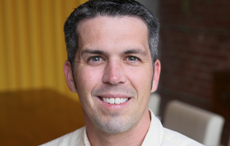This year at Travois, we are celebrating our 20th anniversary, and I am proud to have been a part of this company for 10 years, half of that time. In the last decade, I have had the privilege of helping clients to develop new and rehabilitated housing all across Indian Country.
Our clients have created or rehabbed 4,621 homes in the last 20 years — an amazing number!
But an even more amazing thought is to consider what else happens when a new housing project is awarded Low Income Housing Tax Credits (LIHTCs).
For example, a construction worker takes a job framing houses and earns a steady income, and he spends his wages in the local economy, which boosts local businesses. Along with houses, a project may develop a new community center or a playground that gives local children a safe, fun place to spend free time. And families, once they are no longer burdened with continually searching for housing or living in overcrowded conditions, now have time to focus on schoolwork, healthy eating and exercise and enjoy a higher quality of life.
For our #20YearsEquals segment for March, we want to help share the stories we’ve heard of how housing helps Native communities. Check out the Prezi below and see stories, videos and photos for a snapshot of the amazing things our clients have accomplished over the last 20 years.
If you are interested in learning more about why housing matters, check out the MacArthur Foundation’s How Housing Matters to Families and Communities initiative. The foundation embarked on a five-year, $25 million research investment to “explore the notion that stable, quality housing may be an essential ‘platform’ that promotes positive outcomes in education, employment, and physical and mental health, among other areas.”
We also want to hear more stories. Join the #20YearsEquals conversation or send me an email at bschuler@travois.com and tell me why housing matters in your community or why new housing is needed.
(We thank Advanced Native Construction for sharing the Warm Springs video that we used in the Prezi.)


